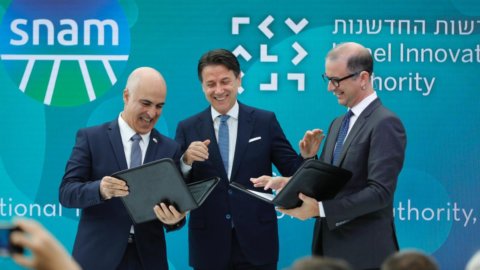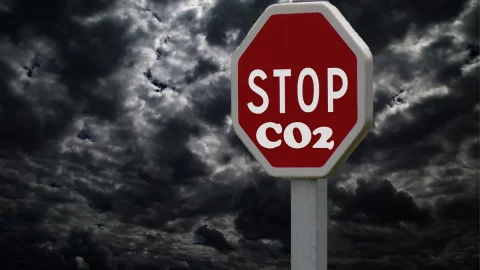Snam goes all out on the hydrogen challenge. The company that manages the gas infrastructure in Italy wants to seize the full potential of hydrogen as a clean energy vector of the future in the context of the fight against climate change and the growing integration of environmental, social and governance (ESG) factors in the strategies of businesses. We talk about it during the initiative "The Hydrogen Challenge – 2019 Global ESG Conference”, organized by Snam in Rome with the patronage of the Ministry of Foreign Affairs and International Cooperation and the National Research Council, and which was also attended by Prime Minister Giuseppe Conte.
In particular, the decisive role of renewable gases, and above all hydrogen, in combating climate change and atmospheric pollution emerged during the debate. Hydrogen, the most abundant element in the universe, does not generate climate-changing and polluting emissions in its various uses and can be transported and stored using existing infrastructure. According to the Hydrogen Council association, of which Snam is also a member, the value of the hydrogen economy is destined to increase from approximately $100 billion a year today to $2.500 trillion in 2050. And above all, according to a Snam-McKinsey study, this clean gas could cover almost a quarter (23%) of national energy demand by 2050 in a 95% decarbonisation scenario.
The Snam-McKinsey study
In Italy, hydrogen has great development prospects by virtue of the significant natural potential for the production of solar and wind energy, from which it is possible to obtain "green hydrogen" by electrolysis of water, and of the capillary existing gas transport network. According to the Snam-McKinsey study (presented together with the book "Generation H" by Marco Alverà, CEO of the Snam group), hydrogen could cover almost a quarter (23%) of national energy demand by 2050 in a scenario decarbonization at 95% (necessary to meet the target of containing global warming by 1,5°), more than the current combined market share of electricity generated from renewable and fossil sources (20% in 2018).
This growth could occur thanks to the progressive and by now consolidated decrease in the production cost of renewable solar and wind electricity and a simultaneous reduction in the cost of electrolysers, determined by the large-scale production of green hydrogen. The greatest potential for the use of hydrogen concerns the transport sector (trucks, buses and trains), residential (heating) and some industrial applications (refining and processes that require high temperatures).
In April of this year, in Contursi Terme (Salerno), Snam launched first in Europe la experimentation with a mixture of hydrogen at 5% and natural gas in the transmission network serving two companies in the area. Snam's commitment to hydrogen is part of the Snamtec project, launched as part of the strategic plan to 2022 and characterized by 850 million euros of investments in energy transition and innovation.
“Hydrogen – commented the CEO of Snam Marco Alverà – can play an important role in decarbonisation and Italy can be in the front row, thanks to its entrepreneurial and research capabilities, its widespread gas infrastructure and its geographical location". Alverà confirms the continuation of the experimentation in Campania. “By the end of the year – he adds – we will introduce a 10% hydrogen mix into the natural gas transmission network. AND it is precisely the regions of Southern Italy, from Campania to Puglia to Sicily, rich in renewable energy, those that could favor the affirmation of hydrogen as a new vector of clean energy as well as new opportunities for development and employment”.
Agreements signed with the Israeli Innovation Authority and CNR
During the event Alverà also has signed two agreements on the topics of sustainable energy and innovation.
The first, signed in the presence of the ambassador of Israel in Italy Dror Eydar, is a memorandum of understanding with the Israel Innovation Authority (The National Technological Innovation Authority) aimed at promoting collaboration between Snam and Israeli companies, especially start-ups, in innovative technologies at the service of green economy.
The second, signed with the president of the National Research Council (CNR) Massimo Inguscio, is a Snam-CNR framework agreement aimed at joint planning and analysis for the development of hydrogen and in general of renewable gases and sustainable mobility. The collaboration, in particular, provides for the launch of a joint work table to evaluate compatibility studies of increasing quantities of hydrogen in gas infrastructures and in mobility, analyzes of carbon dioxide capture, transport and storage processes, studies of new technologies in the biomethane sector and low-carbon gas in general.
Snam Plastic Less program launched
Snam also announced, with the chairman Luca Dal Fabbro, the launch of the "Snam Plastic Less" programme. The initiative is aimed at reducing the use of plastic in industrial packaging by 100% by 2023 and eliminating single-use plastic in beverage dispensers in all company offices by 2020.
Promoted ESG Permanent Observatory with LUISS
The program is part of the context of the growing integration of ESG factors in Snam's business. Last May, the company, the first in Italy, launched a new committee of the Board of Directors dedicated entirely to ESG issues. In this regard, with the aim of promoting the dissemination of environmental, social and governance factors within companies and in particular within the Boards of Directors, Snam has launched a permanent ESG Observatory. The aim is to initiate common reflections, also involving other Italian listed companies, on ESG issues and define best practices. In recent months, in collaboration with LUISS, the Observatory has carried out an initial survey on a sample of 20 European groups, aimed at understanding the nature, roles, functioning and impact of the committees of the Boards of Directors in directing investments and management according to ESG principles.
“The Observatory – he added the president of Snam Luca Dal Fabbro – will have the task of contributing to strengthening awareness of these issues, monitoring progress and reporting best practices among listed companies in Italy and Europe". The business goal is to create long-term value.





